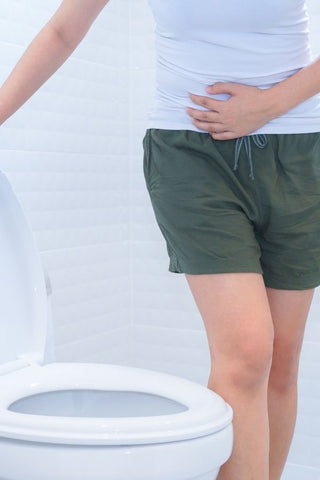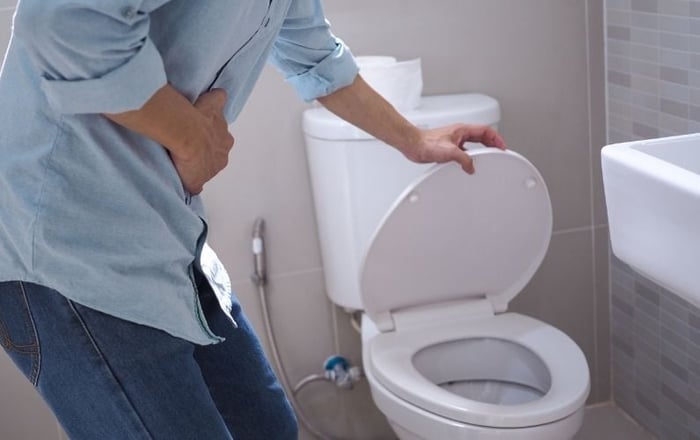Discover the first signs of urinary incontinence and find out your treatment options today.
Incontinence is a rarely talked about a condition that affects 3.5 million Canadians every year. [1]
Despite being easily managed and treated, many people refuse to talk with their doctors about this condition due to the sheer embarrassment it causes.
The truth is, incontinence causes Canada to lose nearly $4 billion annually in lost wages and productivity. [1] And that number won't change unless awareness of this problem increases.
Incontinence is a simple medical issue like any other and nothing to be embarrassed about. It's a condition that's worth understanding so that you can feel more confident and independent every day.
This article will look at the early signs of incontinence so that you can identify them if you or someone you know has this problem. You'll also learn how to use incontinence products to help manage your symptoms.
Let's get started.
What are the First Signs of Incontinence?
What is Incontinence?
Urinary incontinence (UI) is a condition in which you cannot control the flow of your urine. This can range from minor problems such as leakage before you pass urine to more significant issues where you cannot control the passing of urine at all.
Women are twice as likely as men to experience this condition, and simply laughing, coughing, or sneezing is enough to trigger it in some people.
It's important to know that incontinence isn't life-threatening, but it can lower your quality of life.
Fecal incontinence (FI) is a condition where you cannot control your bowels. This can leads to the leaking of stool when you have innocuous problems such as gas, constipation, or even bloating.
Your colon plays a massive role in removing waste products from your body. Leakage and weakened muscles can lead to skin irritations and infections. Some physicians might recommend a colostomy to help some people pass stool safely instead of forcing it to go through the bowels and rectum.
Click here to find ostomy care products that can give you relief if you suffer from this problem.
People with both UI and FI are prone to experiencing depression over their symptoms. They become worried about placing themselves in social situations in case they ever experience an accident. Additionally, they may suffer in their social, sexual, and professional lives as a result.
Thankfully, there are incontinence products that can make life much easier.
Is Incontinence Something That's Bound To Happen As You Get Older?
No. Age can play a role in weakening your muscles or making you more vulnerable. However, incontinence is usually avoidable, curable, and manageable even if you do get it.
This problem isn't limited to having weak pelvic floor muscles. It can also be caused by factors such as :
- Obesity
- A sedentary lifestyle
- Diabetes
- Stroke
- Urinary tract infections
- Childbirth
- Smoking
- Neurological injury
- Aging
- Menopause
Early Signs Of Incontinence
It's essential to know the early signs of incontinence so you can begin your incontinence treatment quickly.
Here are some of the most common first signs of incontinence:
- You experience leakage when you laugh, cough, sneeze.
- You experience leakage when doing physical activities such as running.
- You experience the sudden urge to urinate when shifting your body posture.
- You begin to urinate much more frequently than usual.
- Your bladder never feels empty despite regular urination.
- You struggle to pass urine. Either it flows too slowly, or it starts and stops intermittently without your control.
- You pass urine in your sleep.
- You notice blood in your urine.
- You feel the sensation of pain when you pass urine. (Can also mean a bladder infection)
- You are unable to hold in your stools before you reach the toilet.
- You notice your underwear is getting soiled from the regular leakage of stool.
- You have a history of diarrhea that frequently sends you to the bathroom.
- You have a history of constipation which has weakened your rectum because of the constant stretching of hard stools over time.

Can Incontinence Be Treated?
Several incontinence products can allow you to manage even severe conditions. In some cases, invasive methods are used as a last resort.
Here are some ways to treat incontinence:
1. Colposuspension
Colposuspension is a procedure that involves the creation of incisions in your abdomen. A portion of your bladder is raised and held in place with the use of stitches.
By raising the neck of your bladder into the correct position, leakages are stopped. Your doctor might recommend this procedure if simpler, more manageable treatments fail.
This is a fantastic long-term solution for stress-induced incontinence in particular.
2. Urinary Diversion
This treatment involves redirecting your ureters to the outside of your body so urine can be collected easily. The tubes that lead to your kidney are diverted to an external pouch that prevents leakage, protects your skin from urine, and prevents infections.
Incontinence products such as ostomy care kits can prove helpful in this case.
What are the Best Incontinence Products?
HaloHealthcare.com carries a wide selection of top-rated incontinence products to help you regain your confidence and independence.
You can choose from soft and discreet adult diapers, discreet pads, underpads, and more. We carry trusted brands like Tena, Abena, and Tranquillity.
Our incontinence products will help manage your symptoms by preventing leakage and neutralizing odours. This will help you perform your daily activities with ease and confidence.
Find the right incontinence product for you today! Shop our wide selection of incontinence and ostomy care products here.
Sources:
[1] https://www.canadiancontinence.ca/pdfs/en-incontinence-a-canadian-perspective-2014.pdf










